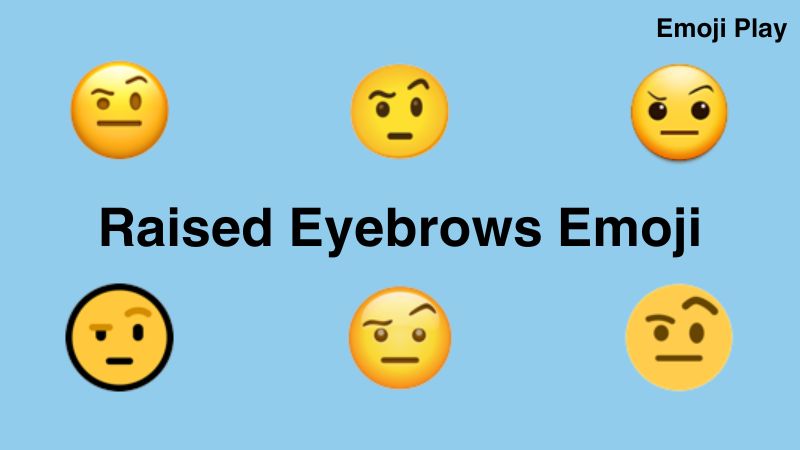Evolution and History of the Smile Eyes Closed Emoji
The world of emojis has come a long way since its inception. Understanding the evolution and history of the smile eyes closed emoji helps us appreciate its significance in contemporary digital communication.
Origins and Development of Emojis in General
Emojis took their first steps in the late 1990s in Japan, where Shigetaka Kurita created a set of 176 pictographic characters for a mobile internet platform. These early emojis were simple and pixelated, but they laid the foundation for what would become a global phenomenon.
Introduction of the Smile Eyes Closed Emoji
The smile eyes closed emoji, commonly known as the “blissful” or “content” emoji, made its debut in Unicode 6.0 in 2010. It quickly gained popularity due to its ability to convey a sense of deep happiness and satisfaction. The combination of a smiling face with closed eyes creates a visual representation of pure bliss.
Changes and Variations in the Emoji Over Time
As technology advanced, so did emojis. With each major Unicode update, new variations and designs of the smile eyes closed emoji were introduced. From slight tweaks to more significant changes, these updates aimed to improve the visual representation and enhance user experience.
While the core meaning and symbolism of the smile eyes closed emoji have remained consistent, its appearance has evolved to reflect the changing times. Today, you may find variations in skin tones, gender representations, and even animated versions that add a touch of whimsy to our digital conversations.
Understanding the evolution and history of the smile eyes closed emoji provides valuable insights into its enduring appeal and its ability to transcend cultural boundaries. Let’s explore further in the upcoming sections.
The Smile Eyes Closed Emoji in Digital Communication
Emojis have revolutionized the way we communicate in the digital world, adding a touch of emotion and personality to our text-based conversations. Among the plethora of emojis available, the smile eyes closed emoji stands out as a popular choice for expressing joy and contentment. Let’s explore the significance and impact of this delightful emoji in digital communication.
A. Role of emojis in enhancing textual communication
In the realm of digital communication, where tone and facial expressions are absent, emojis play a crucial role in filling that gap. They add a layer of emotional context, allowing us to convey our feelings more accurately and effectively. The smile eyes closed emoji, with its blissful expression, amplifies the positive emotions we wish to express, making our messages warmer and more engaging.
B. Why the smile eyes closed emoji is widely used
The smile eyes closed emoji has gained widespread popularity due to its versatility and the emotions it represents. Whether it’s a genuine laugh, a heartfelt appreciation, or a moment of pure happiness, this emoji captures it all. Its usage transcends age, culture, and language barriers, making it a universal symbol of joy and contentment. Its simplicity and universality make it a go-to choice for many, adding a touch of cheerfulness to their messages.
C. Impact of the emoji in conveying emotions effectively
Emojis, including the smile eyes closed emoji, have proven to be powerful tools in conveying emotions in digital communication. Studies have shown that incorporating emojis in text-based messages can enhance the emotional understanding between individuals. The smile eyes closed emoji, with its closed eyes and broad smile, portrays a genuine and infectious happiness, instantly brightening up conversations. It allows us to express our joy and satisfaction in a way that words alone often struggle to capture.
In conclusion, the smile eyes closed emoji holds a significant place in digital communication. Its ability to convey happiness, contentment, and genuine laughter makes it a favorite among users worldwide. By adding emotional depth to our text-based conversations, emojis like the smile eyes closed emoji enhance our ability to connect and engage with others in a digital landscape often devoid of nonverbal cues. So, the next time you want to express your uncontained joy, don’t forget to include the smile eyes closed emoji in your message.
Conclusion
In conclusion, the smile eyes closed emoji holds a special place in the world of digital communication. This adorable emoji, with its eyes squeezed shut and a wide grin, is a powerful symbol of joy and happiness. It has become an integral part of our online conversations, allowing us to express emotions in a fun and engaging way.
Emojis, in general, have revolutionized the way we communicate in the digital age. They add depth and context to our messages, bridging the gap between text and face-to-face conversations. The smile eyes closed emoji, in particular, has gained immense popularity for its ability to convey genuine happiness and contentment.
The cultural significance of this emoji cannot be overlooked. Across different cultures, the smile eyes closed emoji is universally understood as a symbol of pure bliss. It transcends language barriers and connects people on a deeper emotional level. Its interpretation may vary slightly from culture to culture, but the underlying message remains the same – happiness and positivity.
In addition to its cultural significance, this emoji has also become a part of popular culture. It has been immortalized in memes and references, further solidifying its place in our online lexicon. Its widespread usage and recognition make it a powerful tool for self-expression and communication.
In conclusion, the smile eyes closed emoji brings a touch of joy and warmth to our digital conversations. Its symbolism, interpretation, and cultural significance make it an essential part of our digital communication landscape. So, let’s continue to spread happiness and positivity through this delightful emoji!









